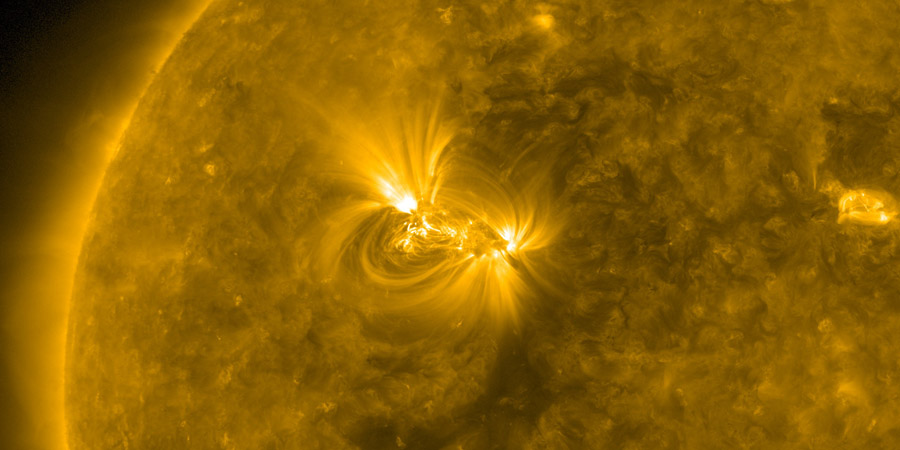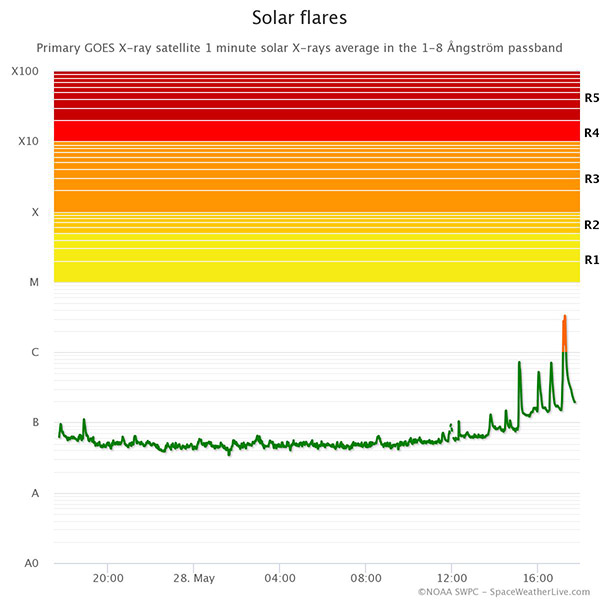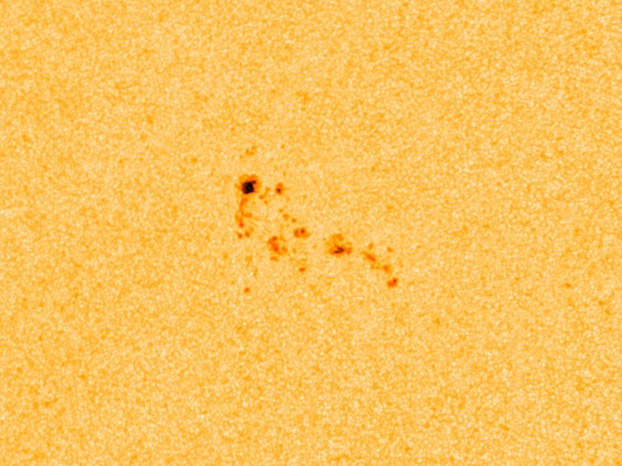Sunspot region 2712
Monday, 28 May 2018 17:51 UTC

Summer is upon us in the northern hemisphere and that means very little aurora sightings. The fact that we are in a very quiet space weather period doesn't help either of course but after a long and cold winter these warm rays of sunshine are very much welcome. Right? Or are you starting to experience aurora withdrawal symptoms? Either way, something has been drawing our attention today and that is the Sun's X-ray output as measured by GOES-15. Indeed: we are talking about solar flares.
Small sunspot region 2712 has been developing steadily today and starting to produce a couple of minor solar flares. A C3.3 solar flare peaking at 17:14 UTC being the strongest event thus far. This group is not capable of producing M or X-class solar flares as it is right now so hold your horses, do not get excited just yet but it's a welcome sight to see some spikes on the X-ray charts now that we are closing in on solar minimum.

Image: Plot showing the Sun's X-ray output during the past 24 hours. Note the increase in activity during the second half of 28 May.
Sunspot region 2712 remains a fairly small and simple region at the time of writing but its a positive sign to see a sunspot region slowly develop. There is potential for a Beta-Gamma magnetic layout to develop if this trend continues as there is some mixed flux development among the trailing sunspots. Something to watch out for during these quiet times.

Image: Sunspot region 2712 as seen in visible light as captured at 17:30 UTC on 28 May by SDO/HMI.
We also have a coronal hole facing our planet in the near future but that's something we will be discussing later on. Keep an eye out for that!
Thank you for reading this article! Did you have any trouble with the technical terms used in this article? Our help section is the place to be where you can find in-depth articles, a FAQ and a list with common abbreviations. Still puzzled? Just post on our forum where we will help you the best we can!
Latest news
Latest forum messages
Support SpaceWeatherLive.com!
A lot of people come to SpaceWeatherLive to follow the Sun's activity or if there is aurora to be seen, but with more traffic comes higher server costs. Consider a donation if you enjoy SpaceWeatherLive so we can keep the website online!

Space weather facts
| Last X-flare | 2024/12/08 | X2.2 |
| Last M-flare | 2024/12/24 | M1.0 |
| Last geomagnetic storm | 2024/12/17 | Kp5+ (G1) |
| Spotless days | |
|---|---|
| Last spotless day | 2022/06/08 |
| Monthly mean Sunspot Number | |
|---|---|
| November 2024 | 152.5 -13.9 |
| December 2024 | 110.7 -41.8 |
| Last 30 days | 116.5 -41.7 |


